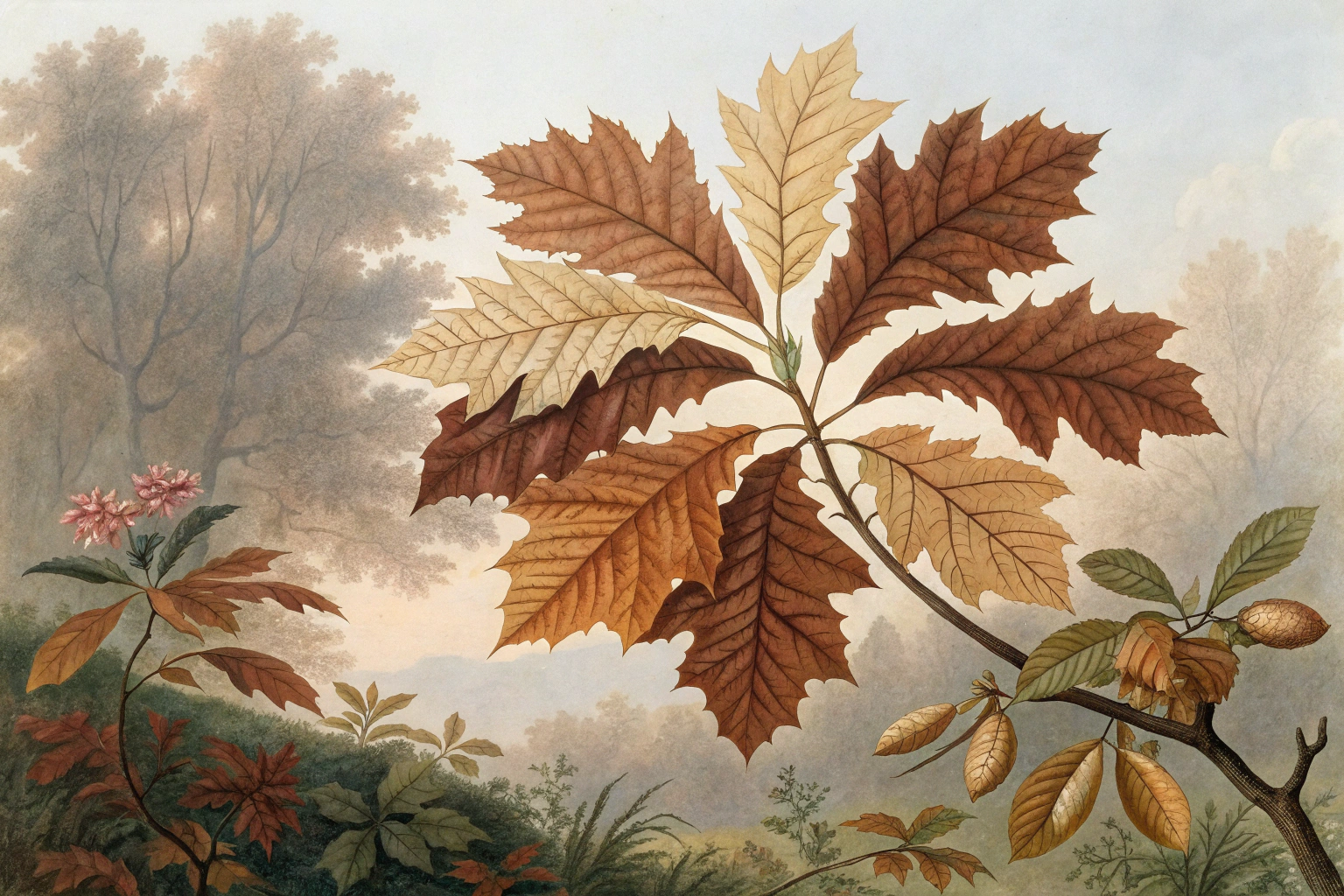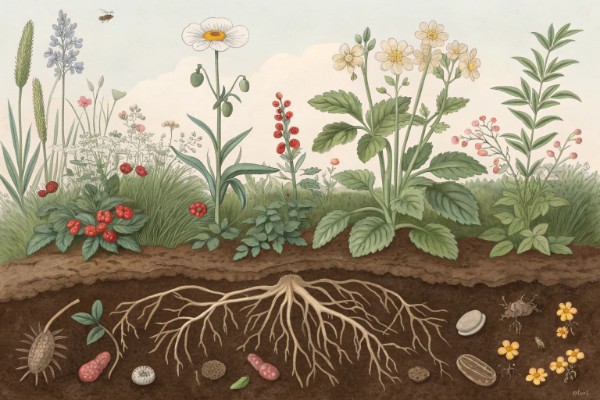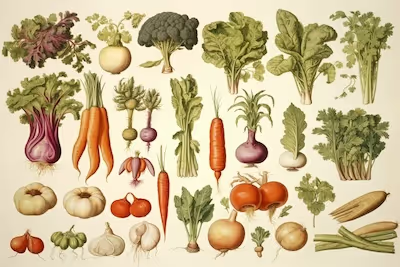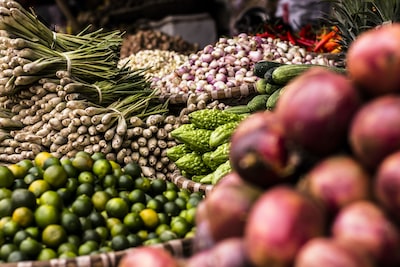Brown Leaves: What Your Plants Are Telling You and How to Respond

brown leaves
Brown leaves tell a story—usually about water stress, pests, or root trouble. Watch for crispy edges or blotches; each pattern points to a different culprit. Fixing brown leaves starts with sharp observation and quick action.
Sick of guessing about those rusty tips or withered patches? Read on for hands-on fixes and real-world reasons your plants flag distress with their foliage. Let’s bring those leaves back to vibrant.
Cheatsheet: Rescue Plants with Browning Foliage Fast
🌱 Main Causes
- Underwatering: Dry soil, crispy edges
- Overwatering: Soggy, limp foliage
- Sun scorch: Pale spots, burnt tips
- Pests/disease: Spots, holes, sticky residue
- Low humidity: Tip browning, curling
- Excess fertilizer: Salt crust, leaf burn
- Rootbound: Stunted growth, brown tips
🩺 Quick Fixes
- Check soil moisture with finger or probe
- Water deeply if dry; drain if soggy
- Relocate from strong midday sun (over 85°F/29°C)
- Remove brown leaves with sterile scissors
- Mist or run humidifier for tropical plants
- Wash leaves and soil to remove pests/disease
- Leach soil with water if over-fertilized
- Repot if roots circle pot edge
🛠️ Tools and Products You'll Need
- Moisture meter or skewer
- Sharp scissors (sterilized)
- Neem oil or insecticidal soap
- Humidifier/mister
- Well-draining soil
- Watering can with narrow spout
- Gloves
- Fresh potting mix for repotting
📈 Key Stats
- 42% of all houseplant issues link to water stress
- Humidity below 40% increases brown tips in most foliage
- Salt buildup can cause 20%-30% loss in leaf function
🌾 Health, Nutrition & Self-Sufficiency
- Healthy leaves boost oxygen and air quality
- Loss of healthy foliage reduces plant edible yield up to 35%
- Brown leaves may harbor pathogens; remove to protect food crops
Brown leaves: a field diagnosis from the potting bench
I read brown leaves the way a sommelier reads a glass: edges, color, texture, timing. They rarely lie.
I once scorched a fiddle-leaf fig in a west window and learned more in a week than from a dozen books.
What the pattern tells you
- Brown tips with green centers: low humidity or fertilizer salts.
- Brown edges that crisp and curl: underwatering, heat, or wind from a vent.
- Brown patches on one side of the plant: sun scorch or a hot pane of glass.
- Brown between veins while veins stay green: nutrient deficiency or high salts locking nutrients out.
- Brown from the base upward with mushy stems: overwatering and root rot.
- Speckled bronzing that turns brown: spider mites or thrips.
Watering: too wet, too dry, and the space between
Overwatered plants brown from lack of oxygen at the root, not from kindness. Underwatered plants brown at the margins first as leaves triage themselves.
“Waterlogged roots are deprived of oxygen.” Royal Horticultural Society
- Check moisture at 2 knuckles deep and by pot weight before watering.
- Right-size the pot: a plant in an oversized pot stays wet too long.
- Water fully until 10 to 20 percent drains out, then empty saucers.
- Use a well-aerated mix so water moves, not stagnates.
Fertilizer burn and salts
Brown tips that outline the leaf like a map border scream salts. It often follows heavy feeding or hard water.
Leach the pot: run water equal to 3 times the pot volume through the mix, then resume a lighter feeding schedule.
“Soluble salts accumulate when water evaporates faster than plants use it.” University of Minnesota Extension
Light and heat scorch
Sun through glass can cook tissue on contact points even on cool days. I’ve seen brown, papery blotches exactly where a leaf touched the pane at 2 pm.
Shift to bright, indirect light, or diffuse with sheer fabric, and rotate the plant weekly for even exposure.
Temperature swings and drafts
Tropicals sulk below 50 F 10 C and brown after a single cold night. Hot air from a vent can desiccate edges at 95 F 35 C faster than you can refill a watering can.
Park plants 3 feet 1 meter away from heaters, AC returns, and leaky doors.
Humidity: the invisible lever
Ferns, calatheas, and marantas brown at the tips when room air sits at 25 percent RH in winter. Aim for 45 to 60 percent RH where these plants live.
“Indoor relative humidity between 30 and 50 percent is recommended for human comfort.” U.S. EPA
Your plants often prefer the upper end of that range, with ferns happy near 50 to 60 percent.
Water quality
Fluoride and chlorine can brown tips on dracaena, spider plant, and sensitive orchids. If in doubt, use rain, distilled, or filtered water for a month and watch new growth.
Soil and roots
Compacted mixes suffocate roots and invite brown leaves. I blend aroids into barky, chunky media with perlite or pumice so roots get air and water in equal measure.
If roots smell sour and slough off, prune to firm tissue, dust cuts with cinnamon, repot into fresh mix, and reduce watering while new feeder roots form.
Pests and disease
Spider mites stipple, then bronze, then brown leaves while weaving dusty webbing. Thrips scrape tissue and leave tan streaks that crisp at the edges.
Fungal leaf spots show tan to dark lesions with halos; bacterial spots look water-soaked first. Isolate, remove infected leaves, improve airflow, and use labeled controls like horticultural oil, insecticidal soap, or copper on the right target.
Should you cut brown leaves
If a leaf is fully brown, remove it at the base with sterilized shears. If only the tip is brown, trim to a natural shape following the leaf outline and sterilize again.
Field notes: three quick cases
Monstera with brown tips in winter: RH measured 28 percent, vent overhead. I added a humidifier to 50 percent, moved it 1 meter off the vent, and new leaves emerged clean.
Dracaena with brown margins: high TDS tap water and monthly heavy feeding. I switched to distilled, flushed the pot, fed at half strength, and growth normalized.
Fiddle-leaf fig with random brown patches: glass contact at a west window. I spaced leaves off the pane, rotated weekly, and the next flush came spotless.
Diagnosis checklist I use
- Feel the soil at depth and weigh the pot in hand.
- Inspect roots if watering has been erratic.
- Read the pattern on the leaf and note where it starts.
- Map the environment: light path across the day, temp highs and lows, RH, vents.
- Check for pests with a bright light and a white card under the leaf.
- Consider water quality and recent feeding history.
- Change one variable at a time for a clean read.
Top gear that actually helps with brown leaves
- Analog or digital hygrometer: keep RH honest around sensitive plants.
- Soil probe or moisture meter: calibrate to your mix and species, then trust but verify with finger and pot weight.
- Shears with bypass blades: clean cuts reduce brown, ragged edges.
- Oscillating fan on low: moves air and thwarts leaf spot without drying foliage.
- Humidifier with built-in humidistat: set and hold 45 to 55 percent RH.
- Grow light with a timer: consistent photons prevent weak, stressed leaves that brown easily.
- Water filter or access to rainwater: lowers salts for sensitive species.
- EC/TDS pen for the curious: confirms if salts are creeping up in your fertigation routine.
Best potting mixes to reduce brown leaves
- Aroids like monstera and philodendron: 40 percent fine bark, 30 percent peat or coco coir, 20 percent perlite, 10 percent pumice or charcoal.
- Ferns and calatheas: 40 percent peat or coco with 20 percent fine bark, 20 percent perlite, 20 percent composted material for moisture but with airflow.
- Succulents and hoyas: 40 percent mineral grit pumice or coarse perlite, 30 percent fine bark, 30 percent coco or peat for a quick-drying, airy matrix.
- Orchids phalaenopsis: 60 to 80 percent orchid bark with a splash of sphagnum for stability and periodic moisture.
Seasonal triggers
Winter: light drops, rooms dry out, pots stay wet longer, and tips brown from low RH while roots drown quietly. I cut watering frequency, increase light, and run a humidifier to 45 to 55 percent.
Summer: blazing sun scorches, pots dry in a day, and fertilizer burn shows fast. I diffuse midday rays and water deeply in the morning.
Myth-busting: misting
Misting feels satisfying but barely nudges room humidity for more than a few minutes. It also wets foliage, which can favor leaf spot in stagnant rooms.
“Misting raises humidity for only a very short time.” University of Maryland Extension
Commercial side-notes that actually matter
- Choose fertilizers with urea-free nitrogen for sensitive plants to reduce tip burn.
- Look for humidifiers with easy-to-clean tanks or biofilm will undo your good intentions.
- Pick grow lights that publish PPFD maps so you can match plant needs without guessing.
- Buy potting media ingredients individually and blend; you control drainage and avoid mystery fines that clog mixes.
Light targets if you want numbers
Foliage plants often thrive at a daily light integral DLI of 4 to 10 mol m−2 d−1. UF IFAS and controlled environment literature put many interior species near the lower end, which tracks with my benches.
If you do not measure DLI, hold your hand over the leaf: a crisp shadow means high light, a soft shadow means medium, and no shadow means low.
Safety valves for sensitive species
- Calathea and maranta: filtered water, consistent moisture, 50 to 60 percent RH, zero cold drafts.
- Spider plant and dracaena: avoid fluoride; let the top inch 2.5 cm dry between waterings.
- Ferns: never let them bone-dry, and keep air moving to prevent fungal issues.
- Fiddle-leaf fig: bright but not baking sun, warm nights above 60 F 16 C, and a chunky, airy mix.
FAQ: quick hits on brown leaves
Orchids with brown tips usually signal salts or underwatering while in bark that dries fast. Flush monthly and soak the bark thoroughly when watering.
Outdoor shrubs with brown edges after a heatwave experienced leaf scorch. Deep water early mornings and mulch 2 to 3 inches 5 to 8 cm to buffer roots.
New growth clean but old leaves brown means the problem is solved. Remove the old leaves and keep the new routine steady for 4 to 6 weeks.
One-liners I live by
- Brown tips often come from the air, not the soil.
- Roots decide what leaves look like.
- Change one thing, then wait and watch the next two leaves.
Citations and voices worth heeding
- Royal Horticultural Society on watering and root oxygen.
- University of Minnesota Extension on soluble salts and leaching.
- U.S. EPA on indoor humidity ranges for comfort and mold avoidance.
- UF IFAS on light measurement and DLI for interior foliage crops.

Want smarter plant choices? 🪴
Frequently Asked Questions About Brown Leaves
Why do my plant's leaves turn brown around the edges?
Leaf scorch often causes browning along the edges. Common triggers include underwatering, low humidity, root damage, or excess fertilizer salts. Dry soil prevents roots from delivering enough moisture to leaf tips, while high fertilizer levels draw water away from roots. Indoor plants near heaters or air vents may experience dry air, accelerating the problem.
How does watering affect leaf browning?
Browning can result from both overwatering and underwatering. When roots remain soggy, they suffocate, leading to poor nutrient uptake and tissue death. Dry soil, on the other hand, fails to deliver moisture, especially to leaf tips. Check soil moisture with your finger: if it's dry two inches (5 cm) down, water deeply. Consistent, thorough watering helps prevent stress that produces brown foliage.
Can sunlight cause leaves to develop brown spots?
Sun scorch develops when leaves receive more direct sunlight than they tolerate. This often appears as dry, brown patches in the center or along the margins of leaves. Move shade-loving plants away from south-facing windows or provide dappled light outdoors. Keep an eye on midday temperatures above 85°F (29°C), as intense heat magnifies the problem.
Should I remove brown patches or affected leaves?
Trim off brown portions with clean, sharp scissors to prevent disease and to improve appearance. For entire leaves that have browned, cut them off at the base of the stem. Removing damaged tissue redirects energy to healthy growth. Avoid tearing, which can open wounds to pests and fungi.
How do indoor conditions impact leaf health?
Indoor air, especially during winter, often becomes dry, falling below 40% relative humidity. Many plants prefer 50-60% humidity. Brown tips signal moisture loss through leaves. Place a humidifier nearby or rest pots on trays of pebbles and water to raise humidity. Avoid placing plants near radiators or heating vents, which accelerate dehydration.
Can pests or diseases cause browning?
Yes. Fungal leaf spots, root rot, spider mites, and aphids can cause brown areas. Look for webbing, sticky residue, or fuzzy patches. Remove damaged leaves, isolate the affected plant, and treat with appropriate fungicides or insecticidal soap as needed. Address issues early to minimize spread.
Does fertilizer play a role in leaf discoloration?
Excess fertilizer, especially salts, may accumulate in soil and damage roots, resulting in brown tips and margins. Flush the soil every few months with extra water to wash out excess salts: pour water until it drains freely from the pot. Always follow product instructions and reduce feeding during the plant's dormant period.
Brown leaves are a plant’s way of waving a red flag. Sometimes it’s thirst, sometimes it’s hunger, sometimes it’s just old age. Don’t panic. Look at the pattern, poke the soil, sniff for rot, and get to know your weather. Most fixes come down to water, nutrients, or light. If it’s a regular thing, see if your watering habits or feeding schedule need a tweak. Compost those crispy leaves. They’ll feed your soil next season. Hungry for more tips or want to troubleshoot garden issues? Check out why vegetable plants keep dying or browse the taim.io blog. Plants will always have their quirks, but a little attention to brown leaves can keep your patch thriving.
The Science Behind Brown Leaves: Cellular Survival Strategies
Leaves turn brown by design—chlorophyll breaks down, cells seal off, and a garden’s defense kicks in. In one square foot, up to 400 million cells may die and decompose, feeding the living. This is nature’s recycling at a microscopic scale.
Some species, like oaks, keep brown leaves through winter (“marcescence”), protecting next year’s buds and soil from erosion. In drought, brown edges signal potassium mobility or cell collapse before visible wilting.
The Self-Healing Process
- Abscission layers form at leaf bases: enzymes weaken cell walls; vascular tissue closes, halting moisture loss.
- Brown pigment, tannins, inhibits pathogens and reduces decay rate. Tannin levels peak just before detachment.
- Some trees drop 80% of leaves in under 72 hours after the abscission process starts, aiding rapid recovery.
Brown Leaves as Soil Builders
- One pound (0.45 kg) of brown leaves can supply up to 0.1 ounce (3 g) of potassium and 0.2 ounce (6 g) of calcium to garden beds.
- Composted brown leaves raise humus content, boosting microbial counts by up to 40% within a single season.
- Chop and drop mulch: layer leaves 2–3 in (5–7 cm) deep to retain 40% more soil moisture and lower temperature swings by 5°F (2–3°C).
Prevention by Anticipation
- Monitor for “marginal necrosis”—brown edges—following heat spikes above 85°F (29°C) or wind events over 20 mph (32 kph).
- Test potassium (K) and calcium (Ca) annually; deficiency worsens leaf browning. Correction helps avoid 60–90 days of visible damage.
- Adjust watering to root depth—overhead irrigation increases fungal browning by 30% in humid conditions.
Find out which plants will thrive in your garden!
Answer a few fun questions and get custom plant recommendations perfect for your space. Let’s grow something amazing together!

start your season





